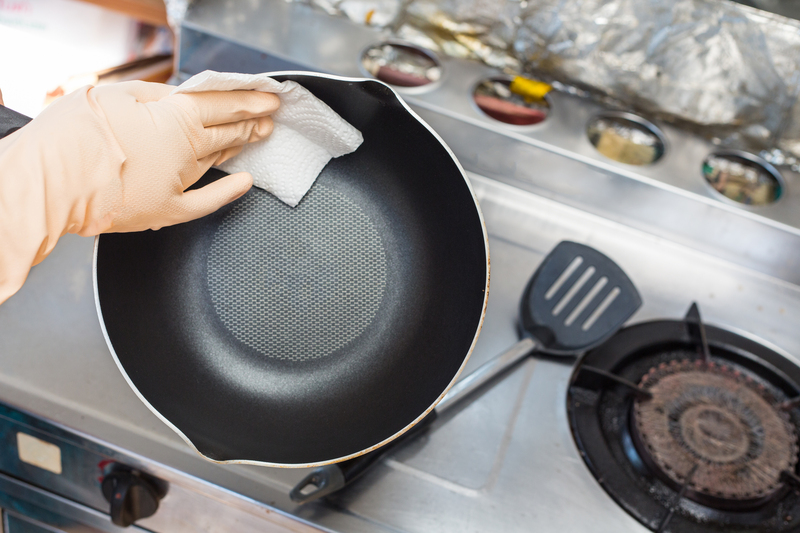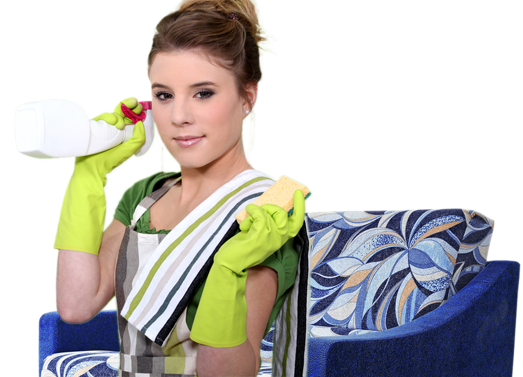Insider Tips for Achieving Streak-Free Window Satisfaction
Posted on 22/05/2025
Insider Tips for Achieving Streak-Free Window Satisfaction
Windows are the gateways to the world outside, but few household chores are as frustrating as cleaning them--only to see streaks and smudges appear as soon as the sunlight hits. Whether you're prepping for a seasonal clean, showing your home off for potential buyers, or maintaining a spotless office, streak-free window satisfaction is more achievable than ever with the right tips and know-how.
Why Streak-Free Windows Matter
Streaks aren't just an eyesore; they can diminish natural light and give the impression of neglect. Crystal-clear windows elevate both the beauty and the comfort of your space. They let in more light, improve your view, and are a subtle marker of attention to detail. In commercial spaces, maintaining pristine, streakless windows speaks volumes about your professionalism.

Understanding the Causes of Window Streaks
Before delving into solutions, it's crucial to understand why streaks form in the first place:
- Using the Wrong Cleaner: Many glass cleaners leave behind residues that form streaks.
- Poor Technique: Circular motions or inconsistent wiping can leave smears.
- Dirty Tools: Reusing dirty rags or old squeegees transfers grime back to the glass.
- Hard Water: Mineral deposits from hard water can leave spots and lines.
- Cleaning in Direct Sunlight: Sunlight causes cleaning solutions to evaporate too quickly, leaving behind visible marks.
Essential Tools for Streak-Free Window Cleaning
Your cleaning results depend heavily on the tools you use. Investing in the right equipment is the first step towards achieving streak-free window satisfaction:
- Squeegee: Preferably with a replaceable rubber blade for consistent, clean finishes.
- Microfiber Cloths: Lint-free, absorbent, and ideal for polishing glass surfaces.
- Buckets: Have two--one for clean solution and one for rinsing tools.
- Soft-Bristle Brush or Sponge: For loosening stubborn debris without scratching glass.
- Scraper or Razor Blades: (Use with caution) For removing paint spots or adhesive residue.
- Extendable Pole: For reaching high or large windows.
The Power of Microfiber: Why It's a Game-Changer
Microfiber cloths attract dust and lift dirt, absorbing moisture without leaving fibers behind. Unlike paper towels or old rags, they don't shed lint or add static, making them perfect for streak-free glass cleaning.
The Best Cleaning Solutions for Streak-Free Windows
You don't need expensive chemicals to achieve a flawless, streak-free window finish. Many professionals recommend simple, homemade mixtures:
- Vinegar and Water: Mix equal parts of distilled white vinegar and water for a potent, non-toxic glass cleaner.
- Mild Dish Soap Solution: Use a few drops of a gentle dish soap in a bucket of water to break down grease.
- Alcohol-Based Spray: 70% isopropyl alcohol and water (50/50 mix) evaporates quickly, reducing the chance of residue.
Pro Tip: Avoid ammonia-based cleaners on tinted or decorative glass, as they may cause damage or fading over time.
Step-by-Step Guide to Streak-Free Window Satisfaction
Step 1: Choose the Right Day
Avoid cleaning windows in direct sunlight or on hot, windy days. The sun causes cleaning solutions to dry too rapidly, leaving behind streaky residue. Opt for a cloudy day or clean in the early morning/late afternoon for optimal results.
Step 2: Dust and De-Cobweb
Start by removing dust, loose dirt, and cobwebs from around the window frame using a dry microfiber cloth, brush, or vacuum. This prevents debris from turning into stubborn grime when wet.
Step 3: Prepare Your Solution
Mix your chosen cleaning agent in a clean bucket. If windows are extremely dirty, rinse off the worst with plain water first. Refill the solution as it gets dirty to avoid reapplying grime to the glass.
Step 4: Wash with a Sponge or Soft Cloth
Immerse a sponge or microfiber cloth in your solution. Wipe the window gently from top to bottom, focusing on edges and corners where dirt accumulates.
Step 5: Squeegee for Perfection
- Wet the window thoroughly, then start at the top left and pull the squeegee straight down in a single, smooth motion.
- Wipe the blade with a clean cloth after each pass.
- Overlap each stroke slightly to prevent lines or missed spots.
- For large windows, work in sections to avoid the cleaner drying before you squeegee it off.
Step 6: Buff with Microfiber
After squeegeeing, polish the edges and any missed spots with a dry, clean microfiber cloth. This final touch will remove any small streaks and leave the glass gleaming.
Professional-Level Hacks for High Satisfaction
Want to take your window cleaning to the next level? Here are some professional secrets for achieving unmatched streakless window satisfaction:
- Work from Top to Bottom: Always clean windows starting at the top so drips don't mar already-clean areas.
- Use Distilled Water: Especially in hard-water areas, using distilled water for your mix prevents mineral deposits from clouding your windows.
- Dry in an "S" Pattern: With your squeegee, use a sideways "S" motion for even, consistent drying (especially on large panes).
- Switch Clothes Often: If your microfiber gets too damp or soiled, switch immediately to maintain an absorbent, streak-free finish.
- Don't Forget the Frames: Dirt and water sitting in window frames and sills can re-dirty your glass when you close the window.
- Safety First: For exterior second-story windows, consider safe ladder use or a telescopic, extension pole.
Dealing with Tough Window Problems
Removing Stubborn Stains and Build-up
Some windows have persistent spots, mineral deposits, or paint drips that regular cleaning can't budge. Here's how to tackle them:
- Limescale or Mineral Deposits: Soak a cloth in undiluted vinegar and place it on the affected area for 5-10 minutes. Scrub gently with a non-scratch pad.
- Paint, Adhesive, or Sticky Residue: Carefully use a razor blade or scraper at a 45-degree angle, always keeping the surface wet to avoid scratching.
- Mold and Mildew: Clean with a mix of one part bleach to three parts water. Rinse thoroughly and dry.
Eco-Friendly and Budget-Friendly Tips
Want a green clean? Vinegar and water are your best friends. Lemon juice also adds grease-cutting power and a fresh scent. Reusable microfiber cloths cut down on paper waste, and making your own solution saves money compared to commercial alternatives.
Homemade Glass Cleaner Recipes
- Vinegar Magic: 1/4 cup white vinegar, 1/2 teaspoon dish soap, 2 cups water
- Alcohol Boost: 1 cup water, 1 cup rubbing alcohol, 1 tablespoon vinegar
- Lemon Shine: Juice of 1 lemon, 2 cups water
Simply mix ingredients in a spray bottle, shake, and go!
Common Cleaning Mistakes to Avoid
- Neglecting Pre-Cleaning: Skipping dusting or failings to rinse very dirty windows first leads to streaks.
- Overusing Cleaning Solution: Excess product creates soapy residue that can streak when dried.
- Using Worn Out Tools: Damaged squeegee blades or threadbare cloths leave lines, smears, and even scratches.
- Ignoring Weather Conditions: Sunlit or windy environments speed up drying and maximize streak risk.
- Forgetting the Final Buff: The last wipe with fresh microfiber transforms good results into *outstanding*, streak-free satisfaction!
Maintaining Streak-Free Window Satisfaction
The key to keeping windows sparkling year-round is regular maintenance:
- Schedule Cleanings: Mark your calendar for at least twice a year--spring and fall are classic choices.
- Quick Spot Treatments: Address handprints, splashes, or pet nose marks early so they don't bake in.
- Weather Watch: After storms or heavy pollen, plan a quick wipe-down to stay ahead of dirt accumulation.
- Keep Tools Clean: Wash microfiber cloths and refresh squeegee blades regularly for long-term effectiveness.
Professional Window Cleaning: When to Call in the Experts
Some jobs need professional equipment and skill, such as multi-story properties, stained or fragile glass, or regular commercial cleaning. Expert teams deliver results quickly and safely, while saving you time and effort.
Hiring pros once or twice a year and handling maintenance in between is a smart, budget-friendly compromise for enduring streak-free window satisfaction.

Frequently Asked Questions About Streak-Free Window Cleaning
1. What makes windows less likely to streak?
The combination of the right cleaner, tools, and drying technique dramatically reduces streaking. Consistently using distilled water and microfiber cloths are game changers.
2. Are commercial glass cleaners necessary?
Many commercial sprays work well, but homemade solutions (like vinegar and water) are just as powerful. Avoid using strongly ammonia-based products, which may harm certain types of glass.
3. Is newspaper effective for streak-free windows?
While newspaper was once a go-to, modern print inks and plastics can make it less reliable and sometimes messy. For the ultimate streakless window shine, stick to microfiber.
4. How can I clean windows upstairs safely?
Invest in a high-quality, extendable squeegee and pole for ground-level safety. If you must use a ladder, work with care and never overreach.
Conclusion: Your Path to Perfect, Streak-Free Windows
Achieving streak-free window satisfaction isn't complicated--it's about having the proper tools, using proven solutions, mastering the right techniques, and keeping up with regular care. Whether you're tackling your home's windows yourself or relying on professionals, these insider tips ensure you impress with shining, streak-free glass every single time.
Let in the light, transform your view, and enjoy the pride that comes with truly spotless windows--with zero streaks left behind!




